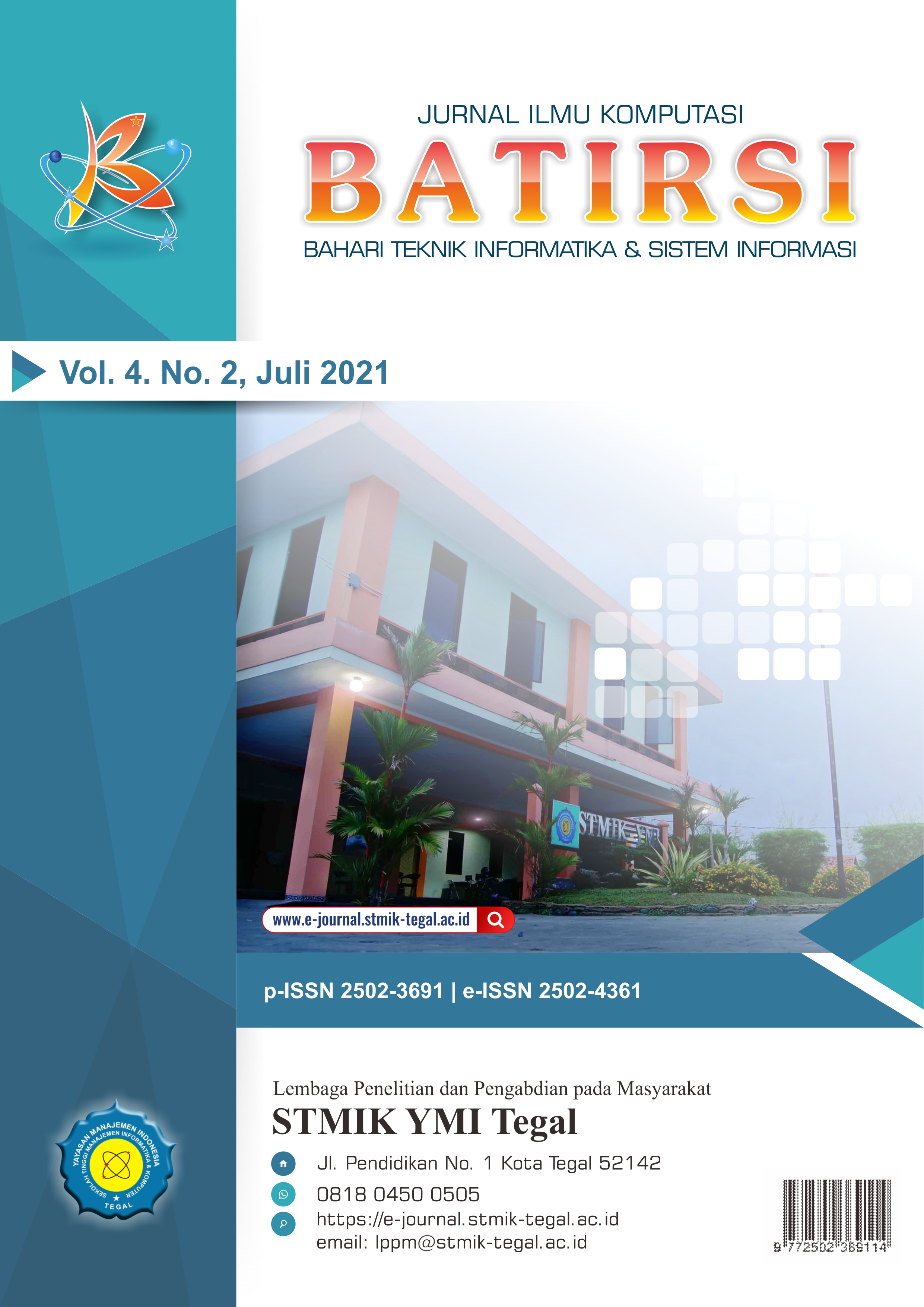Comparison of Dijkstra's Algorithm and Floyd-Warshall's Algorithm Determining the Shortest Route from Tegal Station to Hotel
Keywords:
Dijkstra algorithm, Floyd Warshall algorithm, the shortest pathAbstract
Determining the shortest trajectory is a significant problem that is often found in the world of computers and information technology. The Dijkstra algorithm is one of the graph algorithms used to find the shortest path between two vertices in a positive-weighted graph. The Floyd-Warshall algorithm finds the quickest way between all pairs of vertices in a positively or negatively weighted graph. This study aims to discover the advantages and disadvantages of each algorithm in solving the same problem. Based on this research, the Dijkstra algorithm has a little complexity in source code compared to the application of the Floyd-Warshall algorithm, meaning that the Dijkstra algorithm has higher efficiency in determining the shortest route based on the input of the starting point and destination point. The data and graphs created can also be implemented well. Thus, the Dijkstra algorithm and the Floyd-Warshall algorithm can be used to solve the shortest route problem. However, it does not rule out the possibility of different results in other cases. Applying the Dijkstra algorithm is also easier to understand and use, especially in determining the shortest route to an object of study. The shortest path and the resulting distance information are also expected to help the community, especially tourists who want to stay in Tegal City more efficiently, in addition to optimizing the use of needs such as fuel and estimated time to travel.
Downloads
Downloads
Published
Issue
Section
License
Copyright (c) 2020 Jurnal Batirsi

This work is licensed under a Creative Commons Attribution 4.0 International License.
LICENCE TERM
Diterbitkan Oleh: LPPM STMIK YMI TEGAL p-ISSN: 2502-3691 (print), e-ISSN 2502-4361 (online)
Jurnal Ilmu Komputasi STMIK Tegal: Bahari Teknik Informatika dan Sistem Informasi (BATIRSI) is licensed under a Creative Commons Attribution 4.0 International License.






